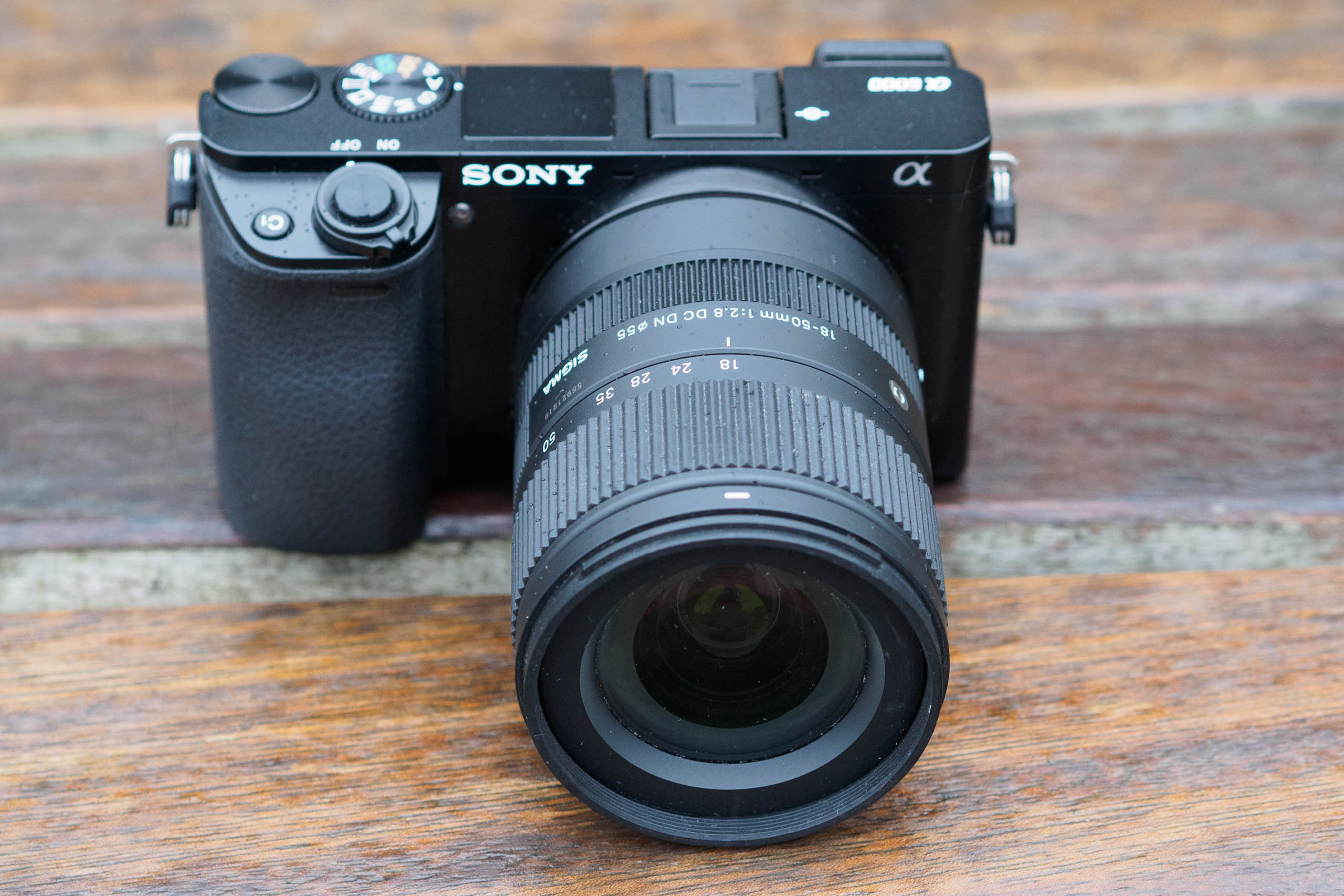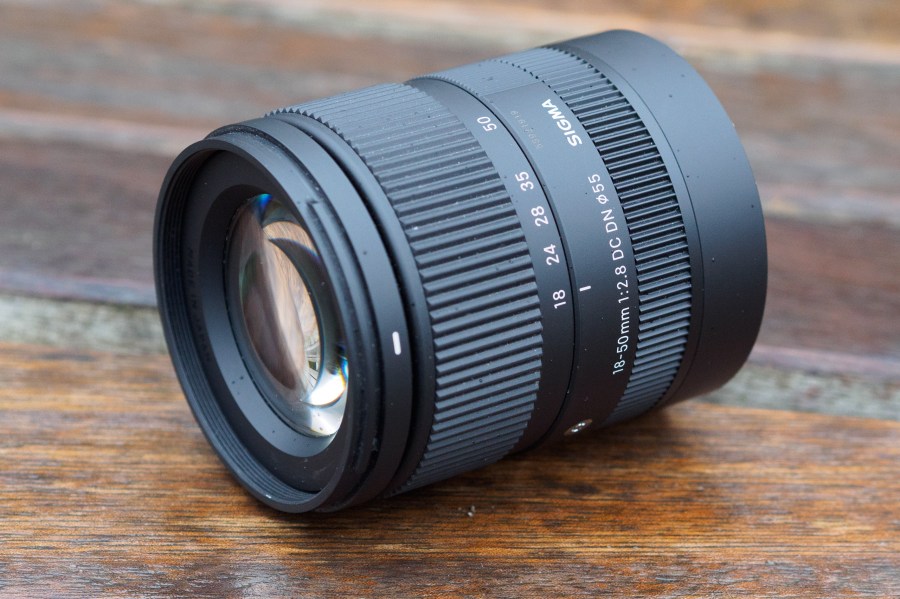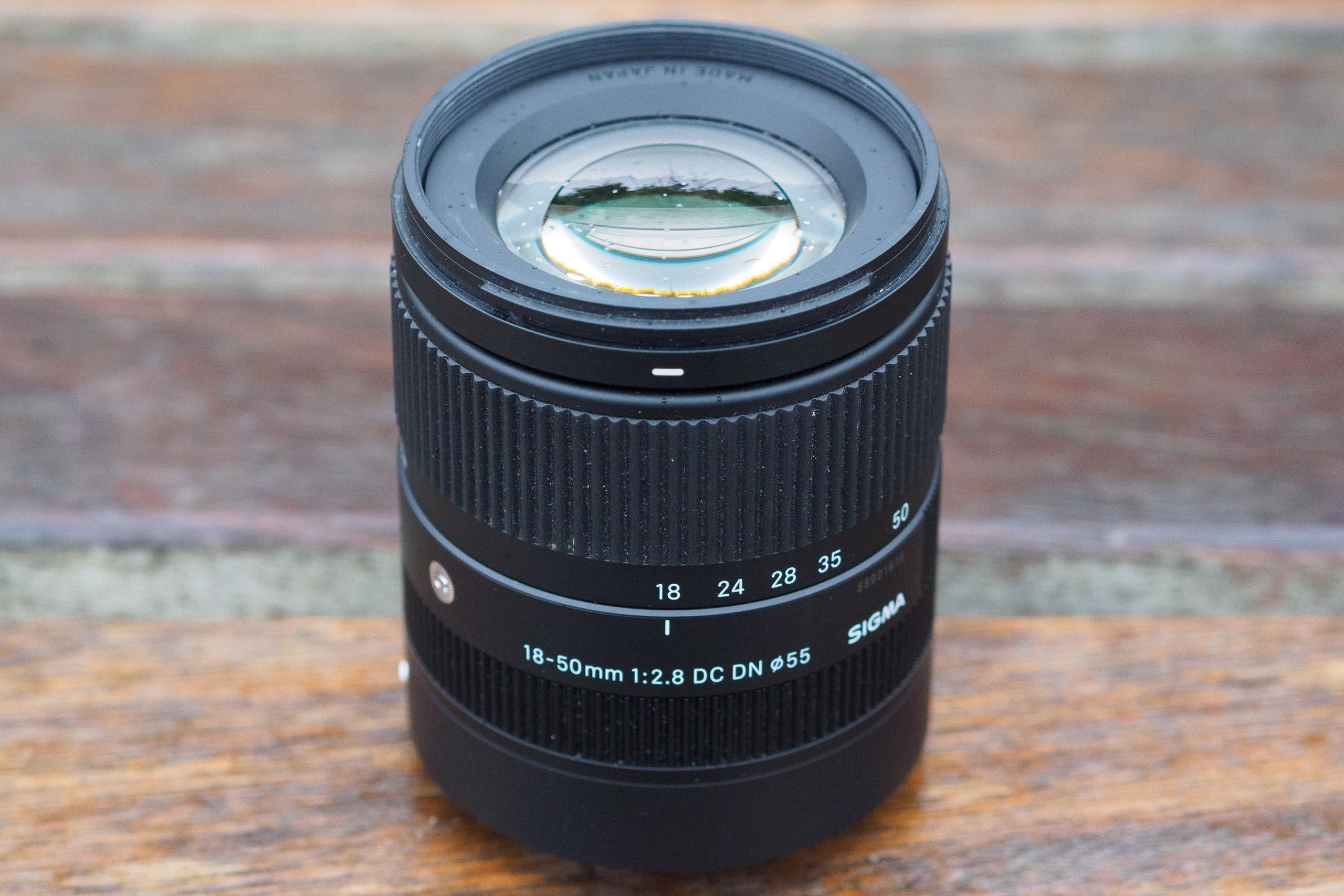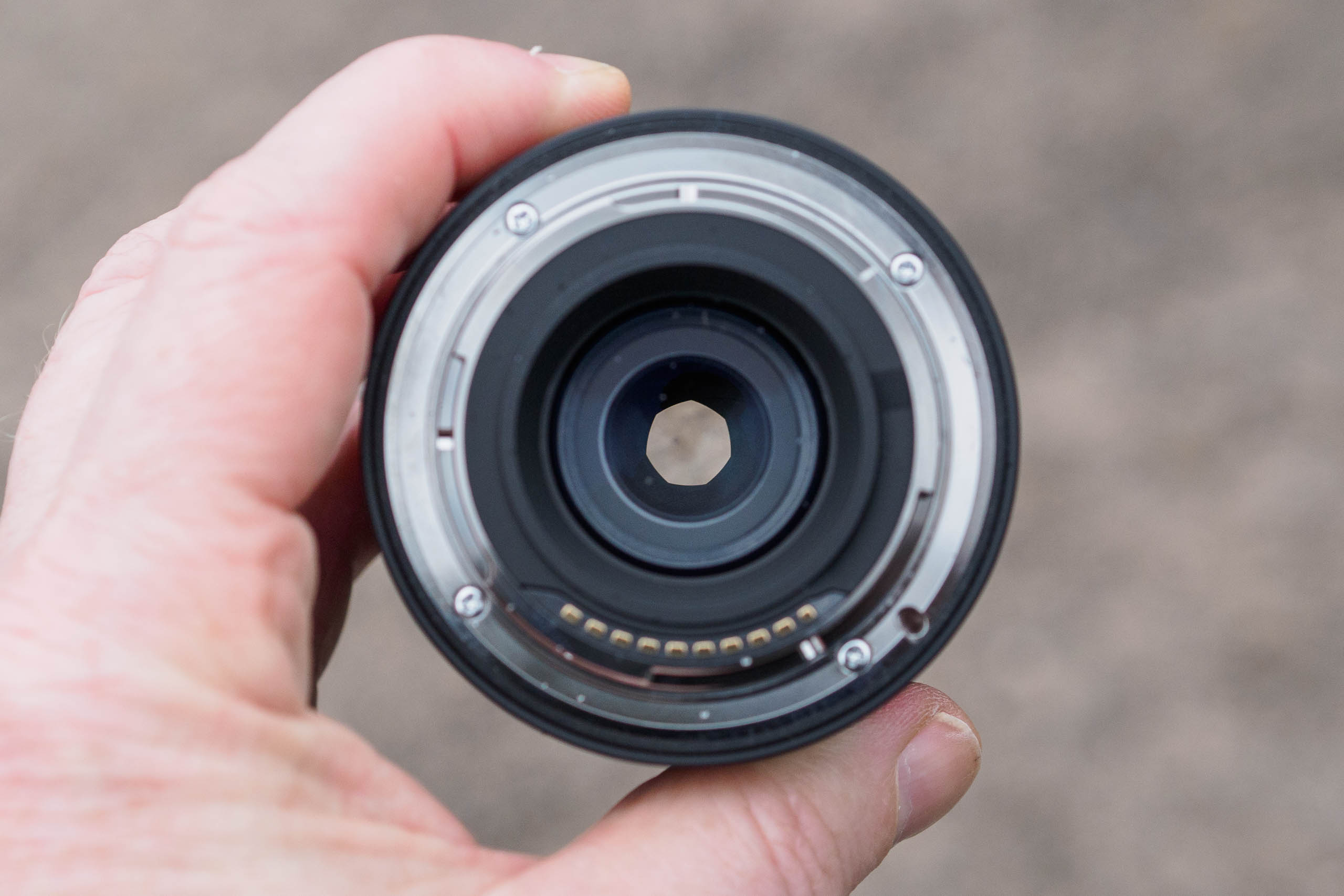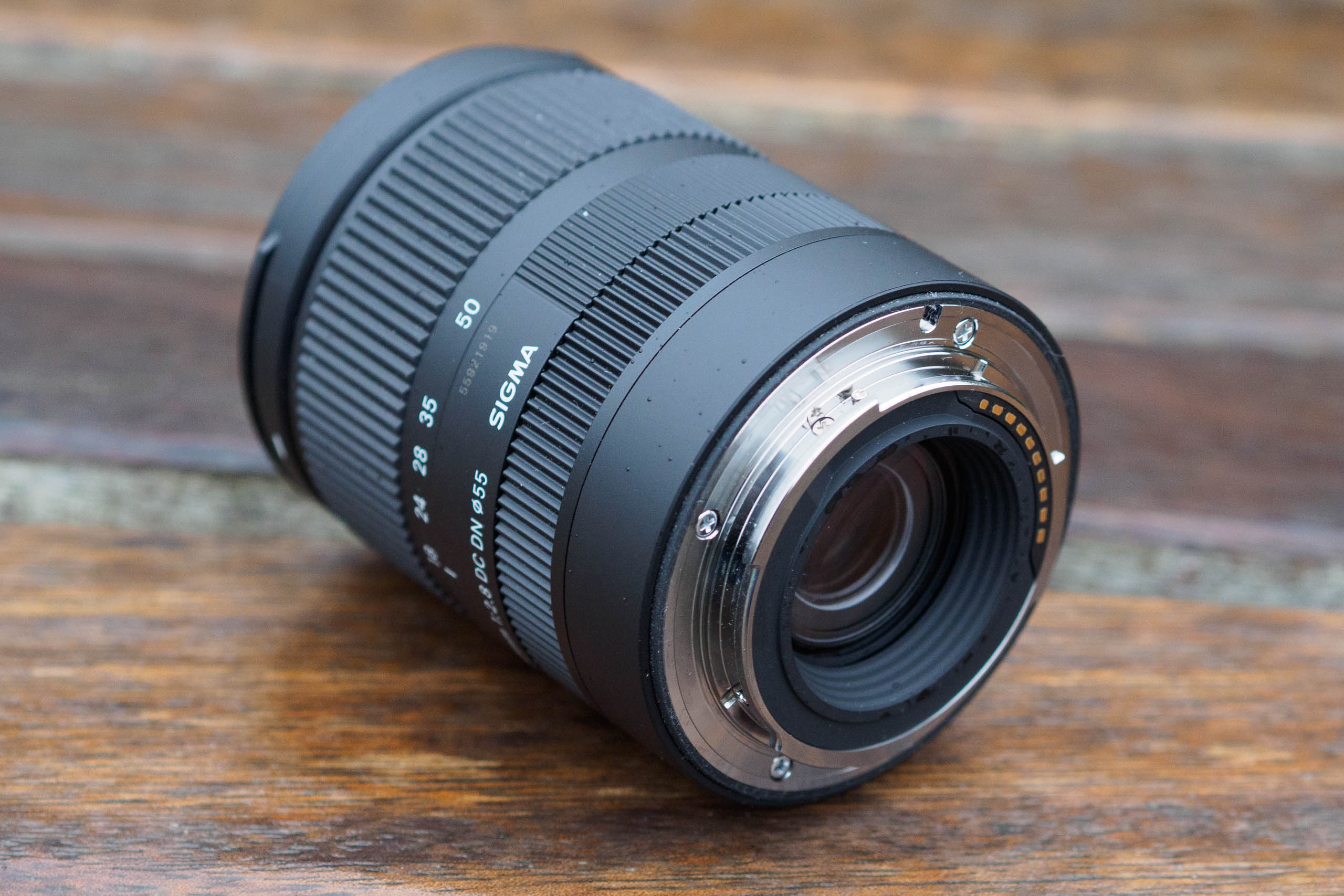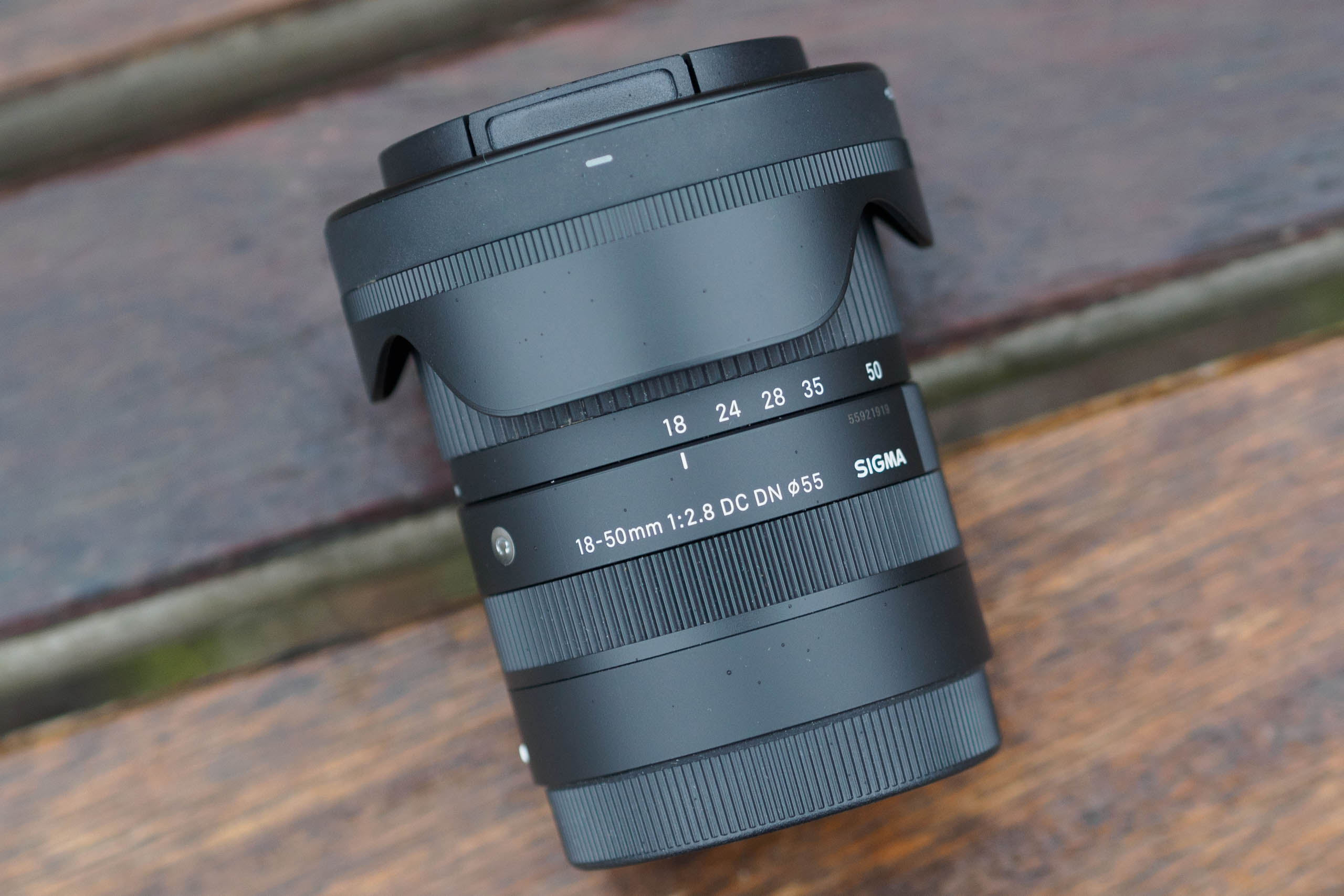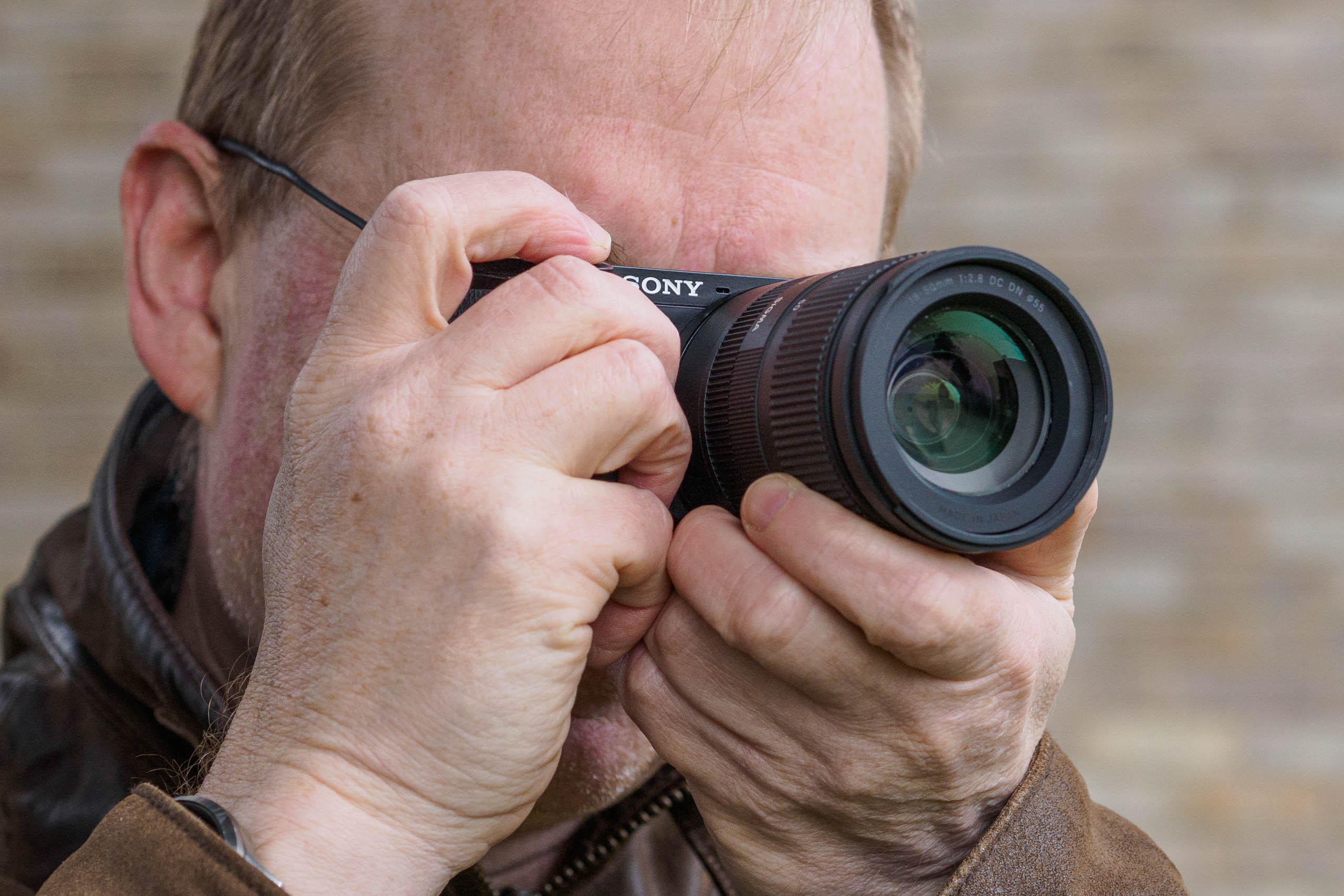Sigma 18-50mm F2.8 DC DN at a glance:
- For APS-C mirrorless cameras
- 27-75mm equivalent zoom range
- Constant f/2.8 maximum aperture
- 12.1cm minimum focus (at 18mm)
- Available in Sony E and Leica L-mount
With all the buzz around full-frame mirrorless at the moment, the smaller APS-C format might come across as a poor relation. But this really isn’t fair, as it’s capable of offering excellent image quality from smaller and cheaper cameras and lenses. Sigma’s 18-50mm F2.8 DC DN is a case in point, providing impressive optics in a compact package for just £429. It’s available for E-mount and L-mount cameras.
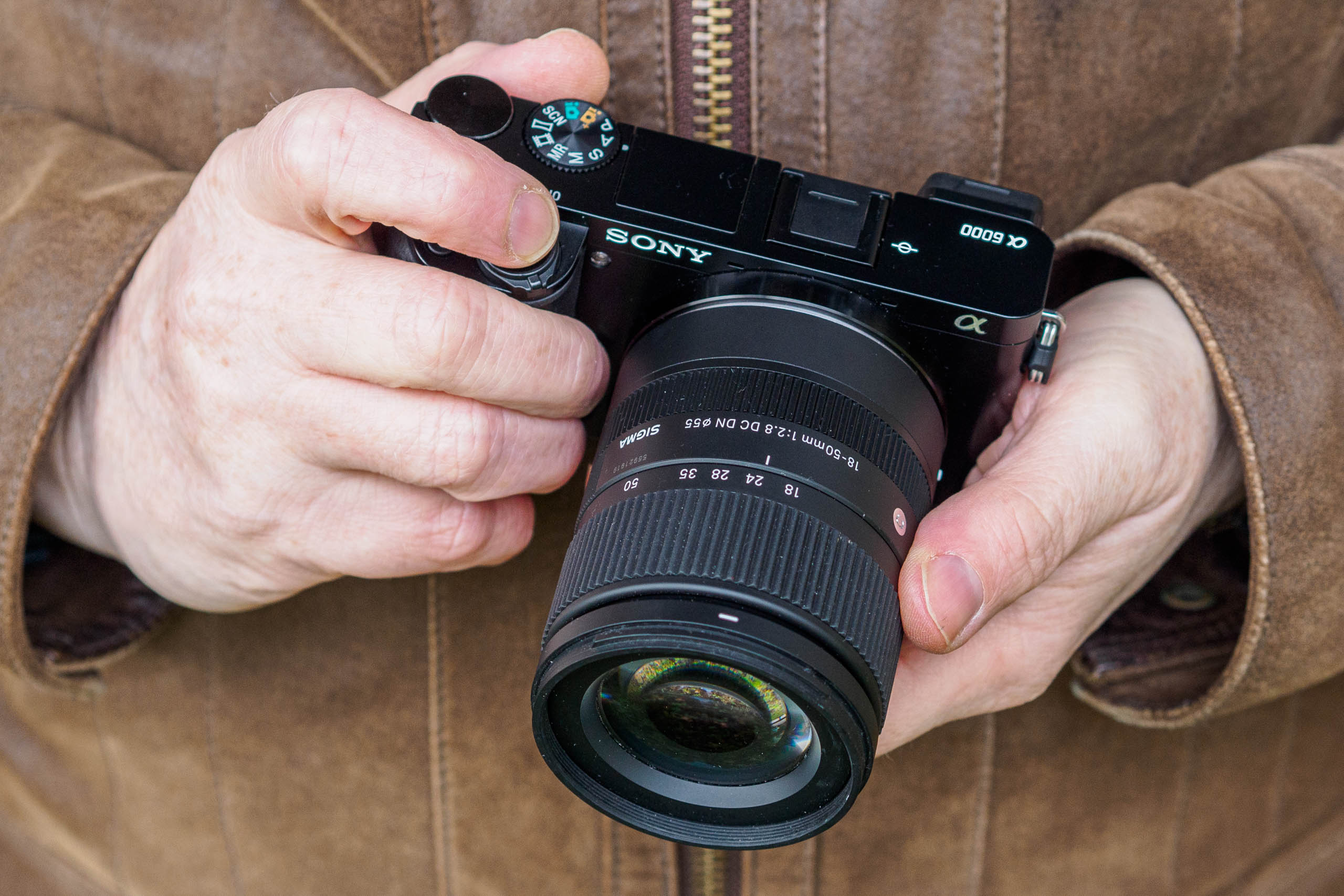
The compact, lightweight Sigma 18-50mm F2.8 DC DN is a good match for Sony’s small A6000-series APS-C mirrorless cameras
To understand why it looks such a bargain, we need to consider the alternatives. Looking first at E-mount f/2.8 zooms, Sony’s E 16-55mm F2.8 G costs £1059, while the Tamron 17-70mm F/2.8 Di III-A VC RXD is £769. Both provide broader focal-length ranges, with the Tamron also including optical stabilisation, but they’re also considerably larger and heavier.
Turning our attention to L-mount, the only other APS-C standard zoom is Leica’s Vario-Elmar TL 18-55mm f/3.5-5.6, which costs £1350. Sigma’s equivalent optic for full-frame cameras (both E- and L-mount), the Sigma 28-70mm F2.8 DG DN, retails at £759.
Sigma has made one significant compromise, though, as the lens doesn’t include optical stabilisation. Given that most of the cameras it’s designed to be used on don’t include in-body stabilisation either, aside from the top-end Sony A6500 and A6600, this will leave many users with no image stabilisation at all. For some, this could be a deal-breaker.
Sigma 18-50mm F2.8 DC DN: Features
The Sigma 18-50mm F2.8 DC DN is a standard zoom that covers a moderate wideangle to short telephoto range, equivalent to 27-75mm on full-frame. As such, it’s well suited to shooting a wide variety of everyday subjects, from landscapes to portraits. This zoom range is both narrower and shorter than most alternative lenses, but that’s the inevitable trade-off for getting a low-light friendly f/2.8 aperture in such a compact package.
As part of Sigma’s Contemporary range, this lens has a different design philosophy to the firm’s more expensive Art optics. It emphasises compact dimensions and light weight, along with simple external controls. This also brings a subtly different approach to optical design, which exploits a higher degree of software correction for distortion and vignetting to help keep the bulk down. I’ll address the real-world consequences of this later.
Optically, the lens employs 13 elements in 11 groups, including three glass-moulded aspherical elements and a super low dispersion (SLD) glass element to suppress peripheral aberrations. The firm’s Super Multi-Layer Coating is applied to minimise flare and ghosting. An aperture diaphragm with 7 curved blades aims to deliver attractively blurred out-of-focus backgrounds.
Focusing is internal, with a stepper motor promising high speed and low noise. The minimum focus distance ranges from 12.1cm at wideangle to 30cm at telephoto, which is handy for close-ups. At the front you’ll find a 55mm filter thread, surrounded by a mount for the supplied petal-type plastic lens hood. A degree of dust- and plash-proofing is provided, including a rubber O-ring seal around the metal mount.
While the lens is designed for APS-C cameras, it can also be used with full-frame models, on which it should automatically engage APS-C crop mode with a commensurate drop in resolution. For example, on a 24MP full-frame camera it’ll give 10.7MP images. Turn off the crop function and you’ll find that, unsurprisingly, it doesn’t fully illuminate a full-frame sensor at any focal length.
Sigma 18-50mm F2.8 DC DN: Build and Handling
Measuring approximately 65m in diameter and 75mm in length, the 18-50mm is remarkably compact for an f/2.8 zoom. It’s very similar in size to the Sony E 16-70mm F4 ZA OSS, but a little lighter at 290g, thanks to its plastic-skinned barrel construction. In comparison, Sony and Tamron’s f/2.8 zooms both weigh over 200g more.
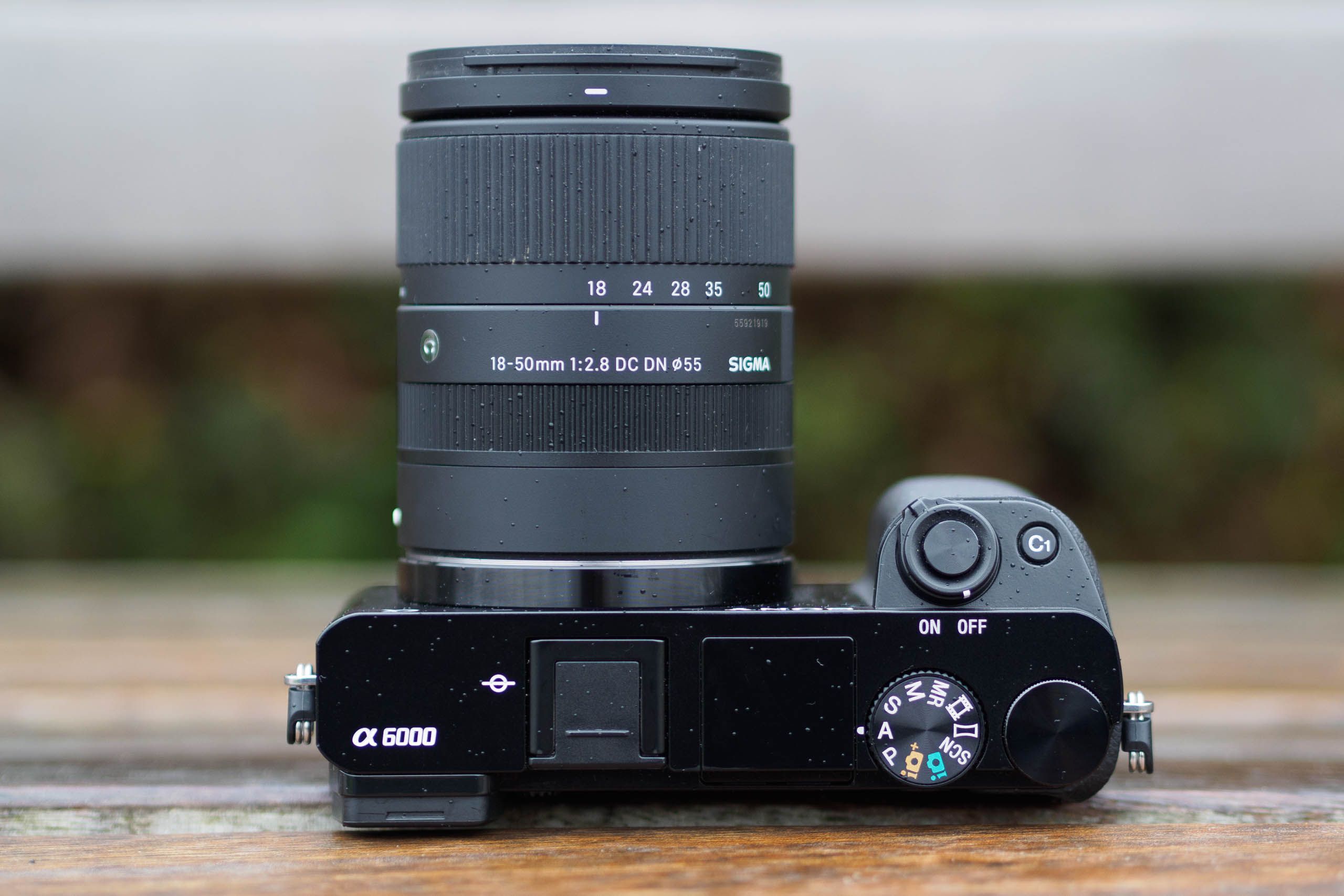
The lens’s slender design gives space for your fingers and means it doesn’t overhang the camera body
Mount the lens on a Sony A6000-series camera, and Sigma’s thinking immediately becomes apparent. The slim barrel has clearly been designed not to overhang the unusually low-profile body, while also providing sufficient space for your fingers to wrap around the handgrip as comfortably as possible. Compared to the heftier Tamron 17-70mm f/2.8, the Sigma 18-50mm f/2.8 feels better balanced on the small Alpha 6000 that I used for testing.
At the front of barrel, the broad zoom ring sports a ridged rubberised grip and operates extremely smoothly, with the lens extending by 23mm when set to its 50mm position. Closer to the camera, the manual focus ring has a hard plastic grip, and operates electronically without defined end points. That’s the full extent of the controls; you won’t find such niceties as an AF/MF switch or focus hold button.
A couple of neat touches highlight Sigma’s attention to detail. A ridged section on the underside of the barrel between the zoom and focus rings provides a positive hold when changing lenses, while similarly, the hood has a slim ridged grip. It can also reverse for transport, leaving the zoom ring just about accessible for quick grab shots.
Sigma 18-50mm F2.8 DC DN: Autofocus
When it comes to autofocus, the Sigma 18-50mm f/2.8 behaves every bit as well as we’d expect from a modern lens. It snaps into focus rapidly, decisively, and practically noiselessly. As usual with mirrorless systems, I found it to be consistently accurate, regardless of where the subject was positioned in the frame.
About the only caveat is that in low light, it can struggle when the camera is set to use the smallest autofocus point. Switch to Flexible Spot: M and it’s much happier.
If you do need to override autofocus, then manual focus also works well. A quick twist of the focus ring results in a large change of focus distance, while slower movements allow fine-tuning. When the MF Assist setting is enabled, the lens will automatically activate a magnified display in the viewfinder, which should allow the most precise results.
The lens is also fully compatible with Sony’s DMF mode, which allows focus to be adjusted manually after autofocusing.
Sigma 18-50mm F2.8 DC DN: Performance
Optically, the Sigma 18-50mm f/2.8 is pretty typical for a modern zoom designed for mirrorless cameras. If you make the mistake of turning off the in-camera distortion compensation, your images will suffer from marked barrel distortion at wideangle that turns to strong pincushion at telephoto, via a neutral point at about 26mm.

Software distortion correction is integrated into the lens design. Sony A6000, Sigma 18-50mm f2,8 DC DN at 18mm, 1/60sec at f/4, ISO 2500
Colour fringing will also be visible towards the corners of the frame if chromatic aberration compensation is turned off, most markedly at wideangle. Likewise, if you disable vignetting compensation, you’ll see intense corner darkening at f/2.8.

The lack of optical stabilisation means you might find yourself raising the ISO to keep shutter speeds high. Sony A6000, Sigma 18-50mm F2.8 DC DN at 26mm, 1/60sec at f/8, ISO 400
However, it’s important to understand that this doesn’t mean this is somehow a poorly designed lens, just that software correction is integrated into its design. What matters is the final, corrected images, and they’re little short of excellent. The reality is that, used well, this hybrid approach can provide better final image quality than we used to get from equivalent DSLR lenses that were purely optically-corrected.
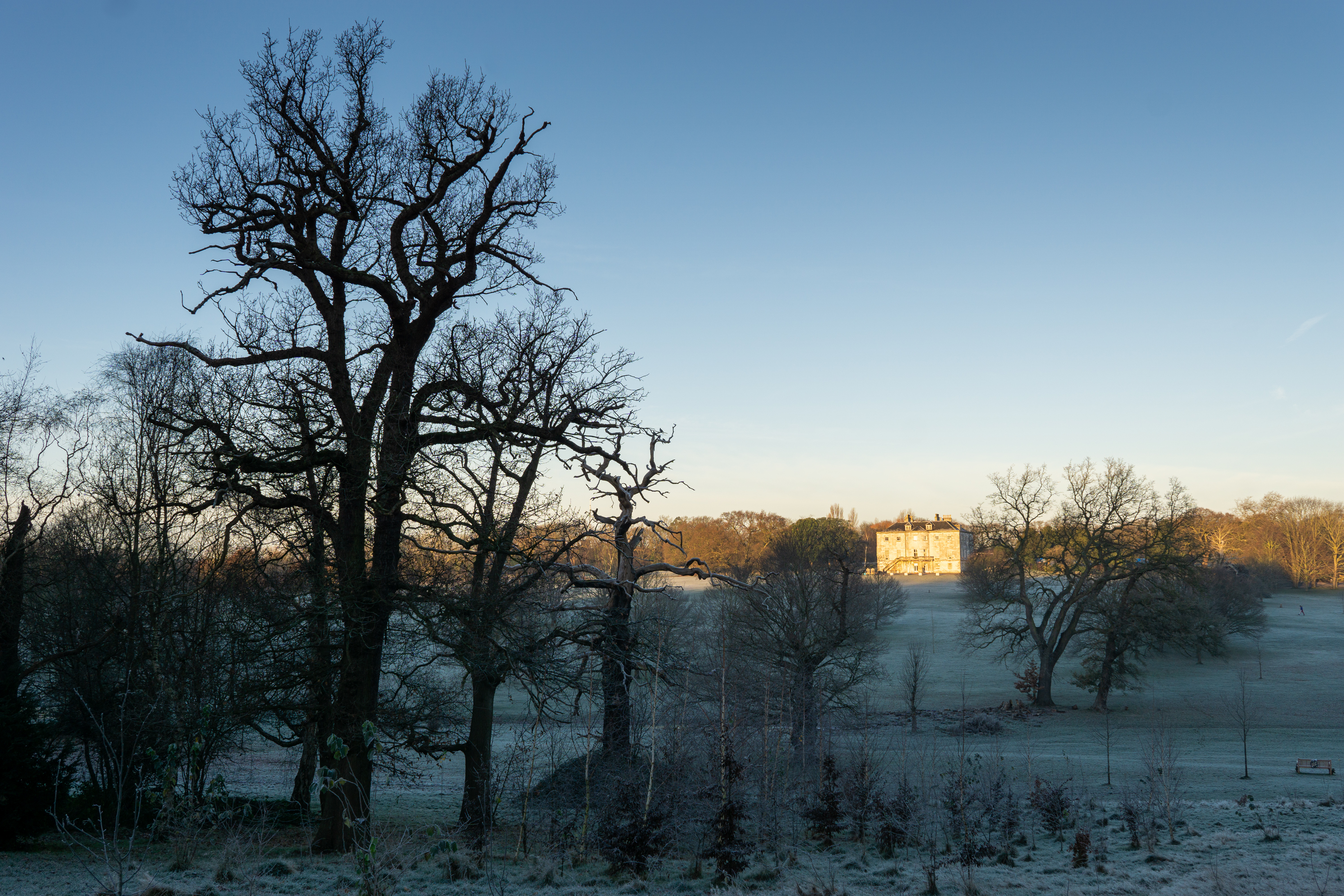
At its optimum aperture, the lens renders lots of fine detail. Sony A6000, Sigma 18-50mm F2.8 DC DN at 22mm, 1/80sec at f/8, ISO 100
Indeed when it comes to resolution, the 18-50mm is an impressive performer. It’s very sharp in the centre of the frame, even at f/2.8, and still records plenty of fine detail right out into the corners, just at progressively lower contrast.

Stoping down to f/11 sees the onset of diffraction softening. Sony A6000, Sigma 18-50mm F2.8 DC DN at 50mm, 1/6sec at f/11, ISO 100
Stopping down actually has very little effect in terms of how much detail is recorded, until the softening effects of diffraction become apparent at apertures smaller than f/11. Sharpness is also impressively consistent across the focal-length range; the extreme corners are perhaps a little softer at wideangle, but not by much.
Image quality is also maintained well through the focus distance range, with the lens delivering decently sharp close-ups. At large aperture settings, it’ll also render attractively blurred out-of-focus backgrounds. Much of the time, I decided not to correct vignetting with such images to complement the selective-focus aesthetic, but that’s very much a personal preference.

You’ll need to stop down considerably to see sunstars. Sony A6000, Sigma 18-50mm F2.8 DC DN at 18mm, 1/125sec at f/16, ISO 100
Photographers who like to see well-defined light-rays emanating from small, bright light sources will, however, find they need to stop down considerably. Sunstars only start to become tightly defined at f/11, with f/16 providing the best compromise against diffraction softening.
Sigma 18-50mm F2.8 DC DN: Verdict
The Sigma 18-50mm F2.8 DC DN is, without doubt, one of the most attractive standard zooms available for APS-C mirrorless cameras. It provides a unique combination of impressive optical quality, large maximum aperture, compact size, and affordable price. Crucially, it doesn’t dwarf the small bodies that it’s most likely to be used on, either.
This does, however come with certain compromises, most obviously the lack of optical stabilisation. Unless you use a Sony A6500 or A6600, this means you have to keep shutter speeds high to avoid blur from camera shake, which can in turn mean hiking your ISOs at the cost of image noise. The 18mm wide end is also a little limited compared to the competition. So the Tamron 17-70mm f/2.8 remains the most versatile E-mount option if you can put up with its size and price.
Even so, the 18-50mm remains a tempting option for Sony Alpha 6000-series shooters, while for Leica CL and TL/TL2 owners, it’s a no-brainer. It could even be attractive for some full-frame users, as a lightweight option for situations where full resolution isn’t necessary. It’s just a shame that, unlike Sigma’s f/1.4 DC DN primes, it’s not available for Canon EOS M cameras. I’d love to see Sigma make it in Fujifilm X mount, too.

Sigma 18-50mm F2.8 DC DN: Full specifications
